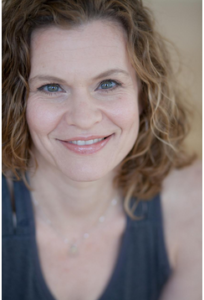Anusara Teacher Tools – The Inner Weather Report – 5th Edition Anusara Marga
Categories: Anusara Marga, community
The Inner Weather Report

By Barrie Risman
Certified Anusara® Yoga Teacher
Author of “Evolving your Yoga”
You are the sky. Everything else – it’s just the weather. – Pema Chodron
My first yoga teacher would sometimes ask us at the start of class,
What’s the inner weather report?
This was (and is) a brilliant question because it accomplished two things:
First, it immediately created a distance from whatever was occupying my mind at that moment and my predominant mood on that day. For someone new to yoga, the notion that my mind (thoughts, feelings, moods, fantasies, and ideas) was somehow distinct from who I actually was seemed foreign and revolutionary. Yet answering this question made it feel natural, even obvious.
Second, it allowed me to recognize that like weather patterns, the inner environment is always changing. No single mood lasts forever. Whatever pattern is dominant won’t necessarily last for too long.
These two effects held groundbreaking implications for my relationship to my mind, and ultimately to transformation. Both of these understandings are crucial if we are to develop a healthy detachment from our thoughts and nurture a self-identity not solely based on what our minds tell us.
The space of our practice offers two ways to work with the mind that, together, create the possibility for shift:
- Welcoming what is: Yoga practice gives us a place to meet, see, feel, and thoroughly be with reality (both internal and external), as it is, without pushing it away, judging it, or wishing it could be different. Just being with it. This includes bodily sensations as well as the full range of the mind and emotions: the usual mental chatter of moods, thoughts, reactions; and stronger emotions like anger or fear.
- Going beyond what is: At the same time, practice gives us access to an inner space that is slightly apart from the reality of what is. This is the space of witnessing. It is the firmament, the all-encompassing awareness that holds the fullness of our experience and yet is not affected by it, like the sky is unaffected by clouds. Shifting to this awareness provides us with the critical perspective needed to feel our independence from what is happening. This space of witness consciousness is the self-reflective capacity that exists within every human being and is the beginning of yoga’s path to inner freedom.
In anthropology, this is called being a participant-observer. An anthropologist immerses herself in a culture while at the same time remaining separate enough to observe that culture. Similarly, yoga teaches us how to be aware of what we are thinking and feeling while at the same time knowing that we are more than just what our minds tell us.
Once we become aware of, yet detached from, whatever is happening, whether it be an outer situation, our own actions, our feelings, or internal dialogue, we then have the ability to choose how we want to respond. In that moment lies possibility. The seed of inner shift is planted.
In our teaching, it’s important to make sure we are giving space for students to nurture the self-reflective aspect of practice. Here are some ways to do that:
- During the centering at the beginning of class, invite students to take stock of “the inner weather report,” to notice without judgment their body, mind, and spirit. Encourage them to observe, take a breath, and consciously allow themselves to be as they are.
- During practice, gives pauses between poses to allows students to release the effort of the previous pose fully before moving on to the next one. In that pause, invite them to reflect on what they just did and become aware of how it felt physically as well as their internal dialogue.
- After practice, offer space and time for students to recollect their experience of the class. Encourage them to articulate their experience of the practice, including questions and insights.
Adapted from Evolving Your Yoga: Ten Principles for Enlightened Practice, with foreword by Sophie Gregoire-Trudeau.




